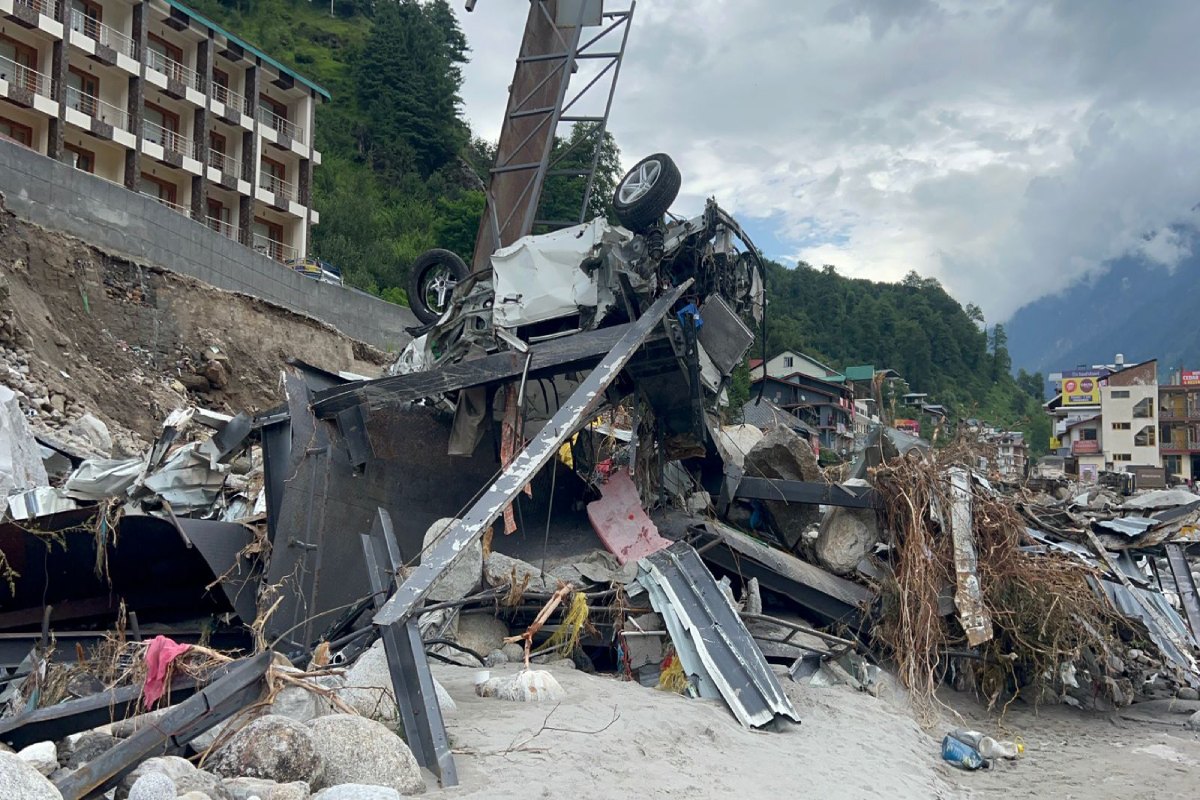Congress govt in Himachal failed to fulfil a single in two years: LoP
Leader of the Opposition and former chief minister Jai Ram Thakur accused the Congress government of failure to fulfill its promises and guarantees in the last two years.

[Photo : SNS]
Monsoon mayhem in Himachal Pradesh last week that left the hill state reeling under crisis with the loss of more than 80 lives and property worth over Rs 8,000 crore devastated, is being cited as one of the worst tragedies the hill state has faced in recent times. And it augurs more such occurrences and devastation in the coming years if the stakeholders; mainly the Centre and the Himachal government do not work in tandem and take immediate remedial measures.
While a political slugfest has already begun over the issue with two ministers in the Himachal government contradicting each other over the reasons that led to the massive losses, and the chief ministers of the adjoining states too taking up the cudgels over the issue of flooding with their counterparts, experts and environmentalists are unanimous that the tragedy has once again exposed the massive failure of successive governments in implementing the policies and their lack of vision for a sustainable development.
Advertisement
“There is a need to review all the major projects like four-laning of National Highways from Chandigarh to Manali and Shimla, the proposal to build a new airport in Mandi, and the expansion of existing ones and the functioning of hydropower projects which have made the entire ecology fragile,” says Manshi Asher an environmentalist justice activist and researcher.
Advertisement
Kuldeep Tanwar a former forest official turned environmentalist agrees with Asher and says that the reckless construction of national highways, deviation in the original plans while constructing smaller roads due to political interference, and no concrete policy for dumping of muck have made hills vulnerable. He points out that there is no dearth of provisions and regulations which if implemented in letter and spirit can ensure that the controlled development is carried out while preserving the fragile ecology of the hills.
He mentions that there are already adequate provisions and rules under Forest Conservation Act 1980 and Forest Rights Act 2006, to keep a check on such reckless developmental activities but the provisions he says are being used only selectively.
“All stakeholders including the government, political parties and public representatives should come together and thoroughly review the ongoing projects and take a call if they really want development at such a heavy cost,” he suggests.

Jiya Negi an environment activist from Kinnaur raises an indirectly connected question – the lack of functioning of the local authorities. He says that the devastation and the loss to life and property would have been much less due to the flash floods this time if local administration and law enforcement agencies had succeeded in keeping a check over the reckless construction activities alongside the river.
“There is massive development work taking place at the cost of natural resources and the ecology — be it the four-laning project by the National Highway Authority of India, carrying out construction activities by the riverside or setting up of hydropower projects. Everyone seems to have forgotten about sustainable development, which used to be the buzzword in earlier times,” says Jiya.
He also points out that people are carrying out construction activities in the low-flood zone and high-flood zone areas alongside the river with impunity. In fact, experts point out that maximum loss to life and property has been reported from these particular areas along the river bank.
To counter the argument that the development comes at a cost, Tanwar draws a parallel with the development work being carried out in China. “Despite facing similar challenges, be it topography, population or the environment, China could carry out the development of roads and other projects by causing minimum damage to the ecology,” he mentions.

K C Azad, a former Director of the state horticulture department, observes that the construction of tunnels and the blasting in the hills while constructing national highways has severely affected the ecology. “This has loosened the grip of the soil on the hills and the plants which is why we are witnessing a sudden rise in the frequency of landslides around these roads. Such activities and construction in the mountains close to the rivers are leading to the change of course of these rivers,” he said.
Manshi Asher concludes by saying that the Centre and the Himachal governments will have to take responsibility and draw a concrete policy for the safety of rivers and natural resources. “The very existence of rivers and nature is at stake. The density of tourism arrival needs to be checked. We need to identify which are the places in Himachal that have turned out to be massive tourist hubs,” she mentions. The state government needs to chalk out a well-defined tourism policy and cap the number of tourists visiting certain sought-after tourist spots to reduce the pressure.
Experts mention that the government should review immediately and assess whether there is actually a need for four-laning in the wake of the weakening of the hills in the state that witnessed massive destruction during the monsoons in recent years.
One can understand that the fund-starved Himachal government already under a debt of about Rs one lakh crore is heavily dependent on tourism and also on the Centre and often has to go by their decisions. But now is the time when the politicians, bureaucrats and regulatory authorities will have to be made accountable and take some sort of responsibility for the danger to the ecology of the hills due to unmindful and rampant construction.

Box
Key suggestions
(Concludes)
Advertisement